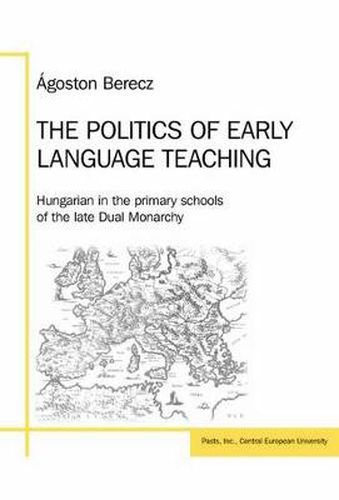Readings Newsletter
Become a Readings Member to make your shopping experience even easier.
Sign in or sign up for free!
You’re not far away from qualifying for FREE standard shipping within Australia
You’ve qualified for FREE standard shipping within Australia
The cart is loading…






Disseminating knowledge of the state language to the non-Magyar half of the citizenry was a policy priority of the government of the Hungarian Kingdom between the 1870s and the First World War. Drawing on a wide array of sources, The Politics of Early Language Teaching provides an in-depth look at how Hungarian was taught to ethnic Romanian and German children in the south-eastern tracts of the Habsburg Empire. The monograph covers the ever-harshening legislation from the period, reconsidering the role of state supervision and exploring the contemporary methodological debates as well as taking a closer look at classroom practices. Not only does the book throw much light in comparative mode on one of Europe’s great early experiments in linguistic engineering; but it provides many new insights into Dualist Hungary’s competing national ideologies and the limits of their efficacy on the ground.
$9.00 standard shipping within Australia
FREE standard shipping within Australia for orders over $100.00
Express & International shipping calculated at checkout
Disseminating knowledge of the state language to the non-Magyar half of the citizenry was a policy priority of the government of the Hungarian Kingdom between the 1870s and the First World War. Drawing on a wide array of sources, The Politics of Early Language Teaching provides an in-depth look at how Hungarian was taught to ethnic Romanian and German children in the south-eastern tracts of the Habsburg Empire. The monograph covers the ever-harshening legislation from the period, reconsidering the role of state supervision and exploring the contemporary methodological debates as well as taking a closer look at classroom practices. Not only does the book throw much light in comparative mode on one of Europe’s great early experiments in linguistic engineering; but it provides many new insights into Dualist Hungary’s competing national ideologies and the limits of their efficacy on the ground.